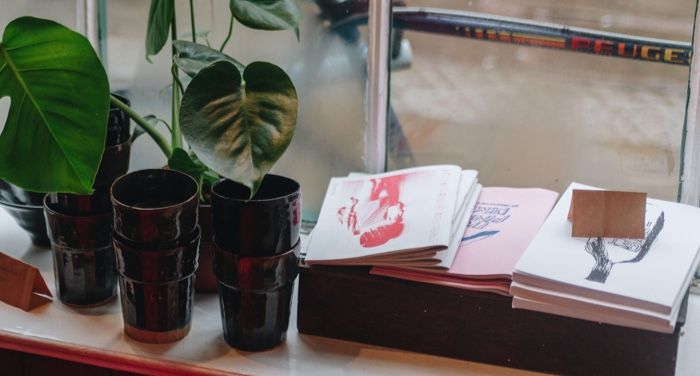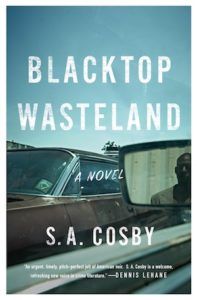
Quaranzines are Popular and Libraries are Noticing
Quaranzines are DIY compilations of content that are based on people’s quarantine experiences. (Obviously, the name is a portmanteau of ‘quarantine’ and zine’.) They have been popular ways of sharing stories during these last few months, and libraries are noticing. On June 1, Gina Murrell posted in Library Journal about how libraries across the U.S. have begun have begun to curate, collect and archive quaranzines. Overall, collecting these documents is a promising way of documenting a tumultuous time in history.
Additionally, I suspect more libraries will begin to do this as COVID-19 continues to affect the world. For the most part, libraries are collecting already-made zines, but there is one public library system has actively begun creating its own online publication.
Let’s Talk Zines and Self-Expression
Typically, a zine (pronounced ‘zeen’) is a self-published booklet printed in a limited-run. Usually it’s produced and bound by the creator(s), allowing people to express what interests them. You can read more about the specifics here.
Zines give creators the opportunity to experiment with form, style and sources. Can’t draw? Make a collage. Too tired to write? Turn your days’ events into a list. In these Corona Times, this flexibility may be the biggest draw of keeping a zine because moods and productivity can vary wildly. If the most notable part of your day was baking banana bread, you could write down the recipe or draw a comic about spilling flour everywhere mid-process. Plus, the anarchy of a zine is a perfect parallel for the anarchy of our days.
Throughout quarantine, keeping a written record has been very cathartic as I work through the good and bad. As an extrovert working in a public library, I used to spend hours of my working day speaking to coworkers and patrons, quick chats, long check-ins and discussions of any length in between. Now, as someone furloughed from my job, conversations and interactions are more limited. Days can easily feel aimless, so writing allows me to tie a satisfying narrative net around a day’s events and to see what I’ve accomplished.
I’m clearly not alone in my desire to document this COVID existence. In a late May episode of NPR’s All Things Considered, Allyson McCabe wrote about the recent zine boom, summing it up as: “[l]ong after the last loaf of sourdough bread is baked and the last quarantini is downed, there will be an archive of memories of life under quarantine in the form of online zines documenting the experiences of everyday people”. NPR has another post from around the same date, this one a cartoon tutorial on how to create a mini zine.
Libraries and Quaranzines
Librarians and library staff are actively working to commission quaranzines. Arlington Public Library (APL) in Virginia has created an online zine that seeks participation from the local community. The concept was pitched by Liz Laribee, APL’s Programs and Partnerships Librarian, and an editorial board was formed to manage the project. Aptly titled Quaranzine, entries are published weekly on the library’s website. Over all, the range of permitted materials is wide, as submissions can be visual art, tutorials, photography, comics, recipes, and any form of written content. For example, the July 3 issue has a 3-year-old’s portrayal of Dr. Anthony Fauci, a cartoon of a cat scream-singing love ballads, poetry, and other varied content.
University libraries are also collecting and archiving quaranzines. For instance, NYC’s The Barnard Zine Library, Pittsburgh’s Carnegie Mellon University, and The Special Collections Library at the University of Iowa.
CMU has even created a LibGuide to quaranzines, offering tutorials, writing prompts, and information about image sources and copyright. Additionally, they are planning to display the quaranzines once the school eventually reopens.
In terms of The University of Iowa’s collection, the zines have been curated by Rich Dana, who is the Olson Graduate Research Assistant for Special Collections. In this case, Dana has started a Facebook Group called “Social Distance Quara-zine! Collective zine-making in the age of COVID-19” and then used it to spread the word about the project.
According to Murrell’s Library Journal post, “Barnard Zine Library specifically reached out to women and nonbinary creators.” Jenna Freedman, Barnard College’s zine librarian, was interviewed for McCabe’s All Things Considered. Freeman explained the draw of representing history through zines: “In the future this story will be told by journalists, by historians, by people with influence. But that doesn’t tell the full story…By inviting a range of people that don’t have those kinds of platforms to contribute, we’re making a better historical record.”
It’s heartening to know that libraries are collecting stories from a myriad of voices. In fact, this could be a chance to chronicle your experience for history — all you need is a pen, paper, and something to bind the book together, and then you can share your story with the library world too.
Also In This Story Stream
- Book Clubbing During A Pandemic: The Online/Offline Experience
- Support And Hope In The Philadelphia Book Scene
- Why Are Chicago Public Libraries Still Open Amid Soaring COVID Rates?
- How to Make a Children’s Book Museum COVID-Compliant
- How the Pandemic Has Changed Our Reading Lives
- Libraries Reopen in COVID-19 Hot Spots: Are Library Staff Being Protected?
- A New Role for Little Free Libraries
- As Bookstores Reopen, Stores Seek Safe Practices
- Librarians in Phoenix Become Healthcare Workers














